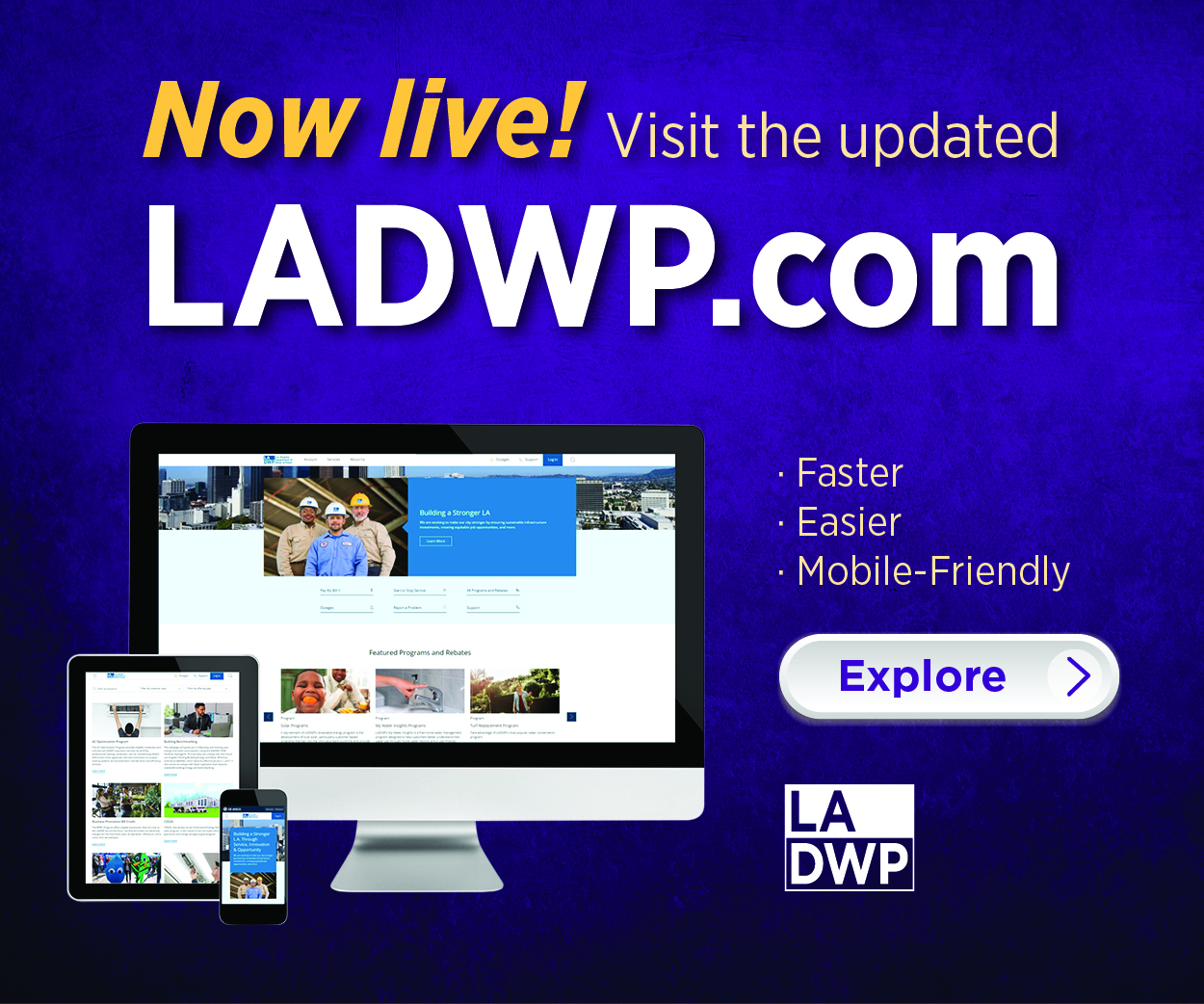Comments
LA TRANSPO - Since its opening on April 28, 2012, the Expo/Crenshaw Station, built for the transfer between the E/Expo and K/Crenshaw Lines, was a quiet place.
When it first opened, the K/Crenshaw Line ran from the Expo/Crenshaw station to the Westchester/Veterans Station in Westchester, and it was an almost personal, exclusive rail line-not crowded, always kept very clean. At times it seemed like the Crenshaw Line was one of those very clean Japanese rail lines and stations, clean, open, ready for use.
The Crenshaw Line seems to be the pride of the Crenshaw area.
That feeling of the Crenshaw Line as an exclusive rail line for riders ended after the June 6, 2025, opening of the LAX Transit Center. Since then, train passenger traffic has greatly increased. Many are carrying luggage to or from LAX. It is no longer a personal, exclusive rail line.
This rail line, and the major transfer point of the Expo/Crenshaw Station, are extremely important in trying to complete the LAWA/LAX Master Plan to reduce the increasing vehicle gridlock in the LAX horseshoe which feeds the airline terminals and also reduce traffic in the neighboring areas.
Reducing traffic at LAX, and ideally anywhere, will also reduce tailpipe emissions, critical in the fight against global warming and climate change.
There is a thirteen-year separation between the openings of the Expo/Crenshaw Station and the LAX Transit Center. Around ten years ago I attended Metro sponsored meetings on the Master Plan. Even then the project was presented to take passengers by a light rail train close to LAX and then take them by a train within the airport. An LAX Automated People Mover was chosen. This master plan was in the open, widely discussed, and reported in the news.
The Expo/Crenshaw Station is critically important to the region’s tourism industry, a major economic driver for the Los Angeles Region.
From Road Genius:
Over 49.1 million people visited Los Angeles in 2023.
- 2019 set a new record of 50.7 million visitors to Los Angeles. Due to the pandemic In 2020, the number of tourists dropped by 50% to 25 million.1
- In 2021, tourists to Los Angeles totaled 38 million. Domestic travel recovered more quickly, while international travel remained low due to ongoing restrictions.
- Los Angeles welcomed 46.2 million visitors in 2022, increasing to 49.1 million in 2023, representing a 97% recovery to pre-pandemic levels.
In 2026 the Futbol World Cup will be played in Southern California with SoFi Stadium in Inglewood as the sole stadium. In 2028 Los Angeles as host city will present the Olympics, with events scheduled for throughout Southern California.
From the Los Angeles Sport & Entertainment Commission: LOS ANGELES (June 27, 2024) —When Los Angeles hosts eight matches for FIFA World Cup 26™, including the sought-after opening match for the U.S. Men's National Team, the region can expect to reap economic benefits far beyond any event held in recent years, according to a new report issued today by Micronomics Economic Research and Consulting.
Projections show L.A. County can expect $594 million in economic impact generated by the historic 39-day-long tournament. Altogether the influx of 180,000 out-of-town visitors during the tournament window will deliver a quarter of a billion dollars in increased wages for employees in Southern California distributed across many industries in the L.A. area, including hotels, restaurants, entertainment and retail. World Cup fans typically spend more than the average tourist with an average of $2,350 per person during their stay, according to the Micronomics report.
For the 2028 Olympics, hosted by Los Angeles (Which requires hospitality.) predictive numbers for visitors are inconclusive. From Google AI Overview:\
Official figures for the exact number of attendees or spectators expected at the 2028 Los Angeles Olympics are not yet available from the organizing committee (LA28). However, based on information released by LA28 and other sources, Visit California states that approximately 10,500 athletes and "millions of spectators" are expected to travel to California for the Games. Another source from the Los Angeles Times reports "hundreds of thousands" are expected to descend on the city.
The 2028 Games are anticipated to be a major event, according to The New York Times, exceeding the scope and attendance of other major sporting events in the region.
For comparison, the 2016 Summer Olympics in Rio de Janeiro, Brazil, attracted 1.2 million tourists, including 410,000 foreign visitors. The 1984 Los Angeles Summer Olympics recorded 5.79 million attendees across events and ceremonies.
The 2028 Olympic and Paralympic Games will feature over 3,000 hours of live sport across 800 events in more than 40 sports. Competitions will be held at various existing venues across the Los Angeles region, utilizing locations like the Los Angeles Memorial Coliseum, SoFi Stadium, and Dodger Stadium. SoFi Stadium, for example, will host Olympic swimming events with a projected capacity of 38,000 spectators.
There will be a lot of people in Los Angeles for the 2028 Olympics. Many will try to use local transit instead of driving, because in many other cities there is a vital and robust passenger rail network. The current lack of clear, specific signage to get to LAX from any MetroRail line does not bode well for the coming surge of transit ridership for the Olympics.
Can Metro and LAWA/LAX can get their acts together? The two organizations have had years to plan the use of the Expo Line to feed the Crenshaw Line at the Expo/Crenshaw Station which would then feed the LAX Transit Center. The potential for large numbers of locals and out-of-towners to not drive to LAX, but take Metro Rail instead is enormous.
Yet, with all of the years of planning, how did planning, and the current state of affairs for the Expo/Crenshaw Station and Crenshaw Line into LAX, fall so flat?
How is it that Metro, and maybe LAWA/LAX as part of mix, performed so badly informing transit riders that the K/Crenshaw Line is the line to take to LAX?
Through regular use of the Expo and Crenshaw Lines and the Expo/Crenshaw Station, I observe people trying to navigate the network, and there is a high confusion factor with too many riders.
Signage
I am a regular transit rider in Los Angeles since 1993, first reduce my emitting of vehicle exhaust to try to fight air pollution in the Los Angeles Basin, and now, to do my share to reduce my carbon footprint to fight the existential threat of global warming/climate change, much of it fueled by vehicle exhaust. Over my years of Metro transit traveling, there have been many frustrations in trying to read, find or decipher Metro’s signage. It is an ongoing issue, and it is not close to being solved with the Expo/Transit Center.
In my observations, transit riders trying to get to LAX by MetroRail seem to be sinking in confusion.
Some live in the Los Angeles region, others are visitors from other parts of California, other states or other countries. I talk to them to find out. These Los Angeles transit explorers wanted to avoid driving, or be driven to the LAX horseshoe gridlock, and decided on taking Metro, just like the Master Plan hoped. Somewhere else they may have easily taken a train to some airport in the nation, or they travelled through Europe, and Japan, and other countries with a vast train network and helpful signage and assumed they could do the same in Los Angeles.
These transit riders have been badly mistaken. Maybe National Geographic could write about the mysterious signage of Metro, and the intrepid transit riders trying to navigate the network.
It seems the Metro design department likes a minimalist approach to signs. It’s not working. We transit riders need large signs, particularly at this critical transfer point.
I see people just off an Expo Train at Crenshaw Boulevard, trying to get to the LAX Transit Center, staring at their mobile devices as if trying to decipher some mystery like looking into a crystal ball. The mysteries are where is the Expo/Crenshaw Station, and where is the train to get to LAX? I guide these transit riders and point across Crenshaw Boulevard, or the Expo Line tracks to the station. They seem to be quite intelligent people, but they cannot see the station, and it is not their fault.
I see transit riders standing in the Expo/Crenshaw Station plaza looking for assurances that they are in right place to get to LAX. The lintel for the station entrance only has Expo/Crenshaw with the pink circle K. Here the lettering is large, which works. But nowhere is LAX posted.
What transit riders need is to see is in large lettering: “LAX.” For many transit riders the K/Crenshaw Line is not their first thought, it is LAX. These transit riders are anxious because they have spent a lot of money for their flight, and they need to get to the airline gate in time. It is a nerve wracking experience.
The city and county as hosts to the these upcoming seminal sporting events, and to all transit riders any time, need to show hospitality for those using mass transit and air travel. They need to empathize with the nervousness of transit riders needing to get to LAX for their flight. That hospitality would be to clearly guide transit riders to LAX through the very critical Expo/Crenshaw Station.
Metro and LAWA/LAX had thirteen years to try anticipating how transit riders, and very importantly those riders using Metro Rail for the first time, would use the network. Was the idea of hospitality any part of any discussion in creating working signage to help our visitors?
It seems Metro signage, and maybe LAWA/LAX operate in a closed loop, with the attitude towards transit riders that these are our signs, deal with it.
The lintel over the Expo/Crenshaw Station entrance has only Expo/Crenshaw with a purple, circle K. That is not sufficient for transit riders in a strange place, riding rail lines for maybe the first time. While the Expo and Crenshaw Lines are critically important to them to get to their destination, LAX, these transit riders are first and foremost looking for signage with “LAX.”
Instead of the immediate replacement of signs, would placing a decal with “LAX” in large lettering next to the existing signage be possible. This would give assurances to transit riders they are in the right place.
Once underground on the station concourse, the hospitality towards transit riders is again missing. An electronic board only states the first and last stations. There is no mention of LAX. Why is LAX not listed on the electronic signs? At this station, I think transit riders trying to get to LAX care little about Redondo Beach. In one day probably more people will use the LAX Transit Center than riders in a month or two will take the train to the Redondo Beach Station.
There were thirteen years for Metro, LAWA/LAX, city and county officials dealing with rail lines and transit, and tourism departments, (Does Los Angeles city or county have tourism departments?) to try to anticipate how transit riders will use the rail network.
On the electronic message boxes on the Crenshaw Line front and side of the trains sitting in the Expo/Crenshaw Station only Redondo Beach is posted. Can these signs become animated as they are on city buses and also display “LAX?” It seems the Federal Transit Administration (FTA) and Federal Railroad Administration govern light rail. Do these organizations prohibit animated train signs? Why cannot trains have their electronic signs listing multiple stops?
On the station platform I constantly help transit riders who are looking around to for assurances that that train on the tracks will take them to LAX. Recently there were two young Italian women, standing next to the open doors of a train, peering into their phones for assurances that the trains would take them to LAX. They looked confused, and anxious. There is no hanging signage to help them. I approached them and just said, “LAX?” They said yes. I then just pointed to the open train doors behind them. The relief on their faces was immediate as they entered the train.
It was so simple, yet so frustrating that on the station platform there are not multiple signs giving assurances to riders that the Crenshaw Line trains will take them to LAX.
At Metro Rail stations there are a litany of canned, computer-generated announcements. Would it be that difficult to include that the Crenshaw Line goes to the LAX Transit Center in the list of announcements?
Having multiple sings with LAX and regular announcements that these trains go there would be act of hospitality. It seems Metro tries to absolve itself of any responsibilities towards riders of its rail lines once they are built.
The economic engine of tourism
From Road Genius:
Over 49.1 million people visited Los Angeles in 2023.
- 2019 set a new record of 50.7 million visitors to Los Angeles. Due to the pandemic In 2020, the number of tourists dropped by 50% to 25 million.1
- In 2021, tourists to Los Angeles totaled 38 million. Domestic travel recovered more quickly, while international travel remained low due to ongoing restrictions.
- Los Angeles welcomed 46.2 million visitors in 2022, increasing to 49.1 million in 2023, representing a 97% recovery to pre-pandemic levels.
Tourism is a major economic driver in Los Angeles, and is there anyone, any department devoted to serving our mass transit riding guests with hospitality with clear travel instructions? As a transit rider who is always seeing confused mass transit riding tourists, I would say no.
Tourists, and locals new to the rail network, and are trying Metro, run into walls of opaque, or non-existence signage to help them in their journey. They rightfully expect basic hospitalities afforded to travelers using mass transit, and there is no hospitality.
There is not enough signage. There is signage in the wrong areas. For some reason the Metro in-house design team seems fixated on minimalistic signs which are not displays of hospitality.
On the existing signs on the Expo/Crenshaw Station, a quick fix would be to add decals with “LAX.” Signs now only read “Redondo Beach,” which mean nothing to many transit riders. They need signs with “LAX.” The decals on the floor of station are not working. People cover the stickers while standing for the next train, or transit riders’ sightline is up, not down.
LAWA/LAX is in a cold war with the builder of the automated people mover, LAX Integrated Express Solutions (LINXS). Is there a similar cold war between LAWA/LAX and Metro which prohibits the use of “LAX” on Metro’s signage?
Metro has recently installed additional signage for the Expo and Crenshaw Lines at the Expo stations at Crenshaw and Expo/Crenshaw Station. They may help, but without “LAX” posted, they are inadequate in helping transit riders.
Entry and Exit Turnstiles
At the Expo/Crenshaw Station concourse are fare gates. Most are three post rotating gates, and there is only one gate which is wider and has retracting guards for use by those with large objects, such as luggage. Currently I see struggles of transit riders trying to cross the fare gates to go down to the station platform.
The retractable guards in the larger gate get stuck closed, so no one can go through. Transit riders then need to use the three post rotating gates which are very clumsy and difficult to use if pulling or pushing luggage. I use a rolling briefcase and have gotten stuck trying to use the three post rotating gates. It is not pleasant.
In an act of hospitality, those involved with this station years ago should have known of the LAX Master Plan to route airport traffic out of the airport horseshoe and onto transit. They should have anticipated the potential number of luggage touting tourist transit riders, locals using the system, and the potential massive increases of riders for the 2026 Futbol World Cup and the 2028 Olympics.
More of the wider, retractable gates are needed now and should have been installed initially. I see transit riders with luggage, anxious to get to LAX, stuck behind the closed retractable guard arms. They then try the three post gates and get stuck. All the while they are anxiously calculating how much time they have to get to LAX to catch their flight. This creates high anxiety and creates ill will towards this city and its rail transit network.
A cynic could say these transit riders should just use the Emergency Gate. But, those gates are for emergencies, not everyday use.
The Oxford Language on-line dictionary defines hospitality as, “the friendly and generous reception and entertainment of guests, visitors, or strangers.” This city and county, its Metro transit agency and it airport fall short of showing hospitality.
(Matthew Hetz is a Los Angeles native and composer whose works have been performed nationally. He is the former President of the Culver City Symphony Orchestra and Marina del Rey Symphony. A passionate transit advocate, Matthew is dedicated to improving the rider experience and encouraging drivers to embrace public transportation as a solution to air pollution and climate change. He teaches at Emeritus/Santa Monica College and is a regular contributor to CityWatchLA.com.)

















